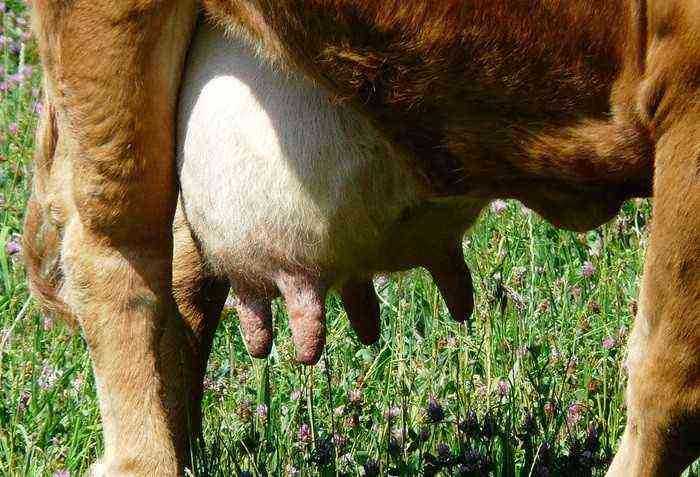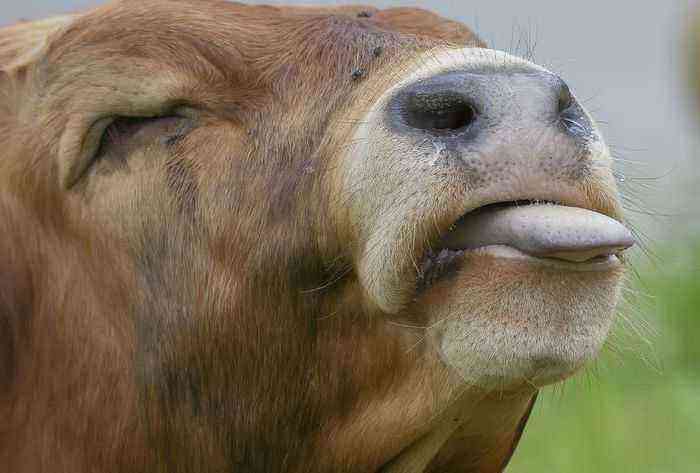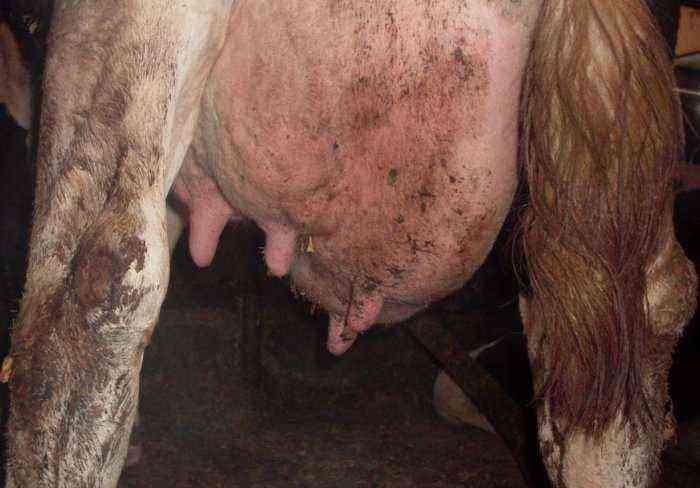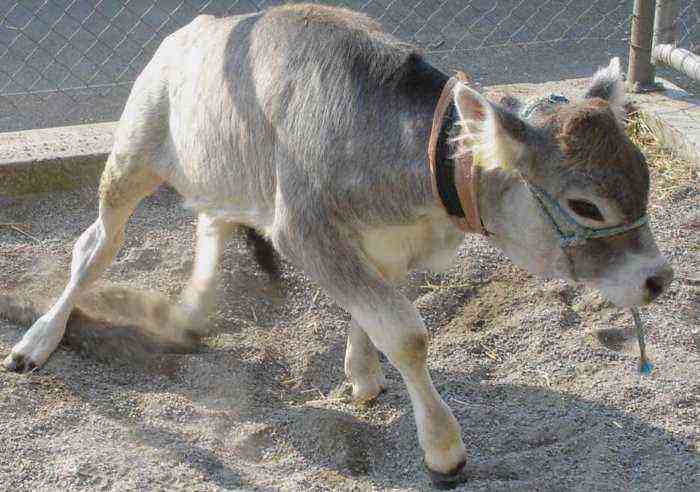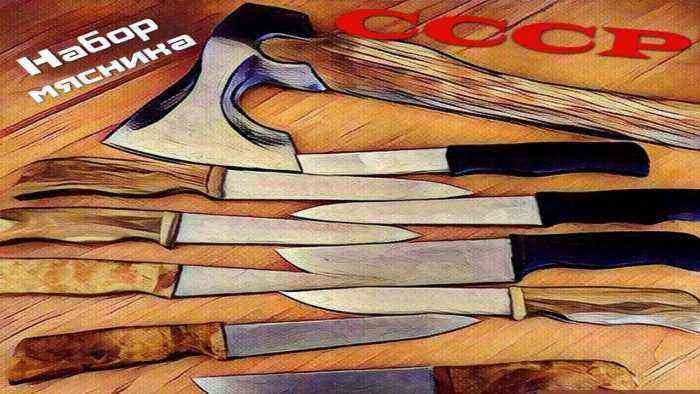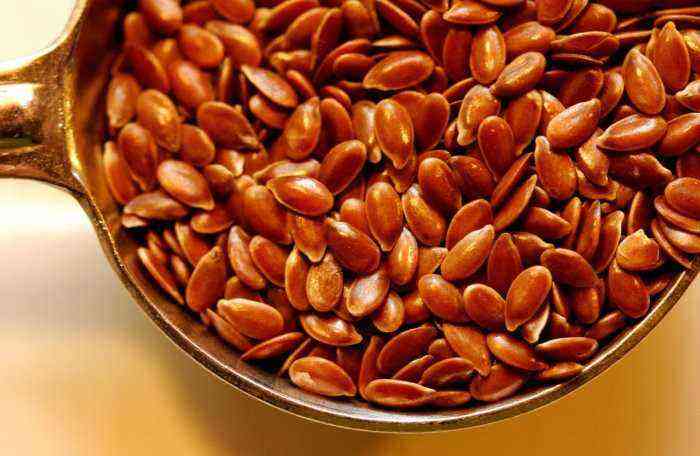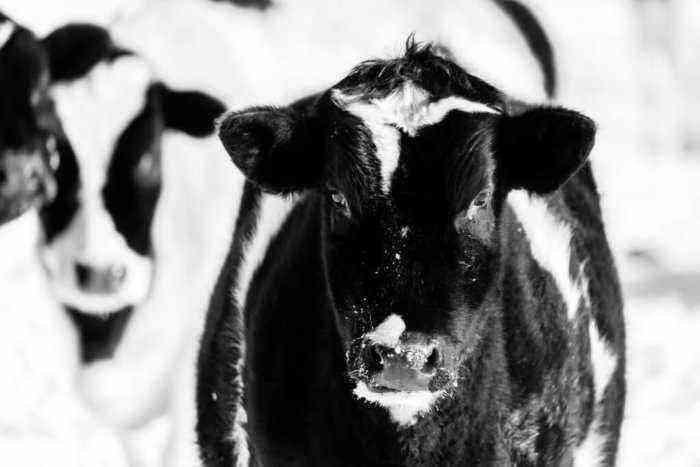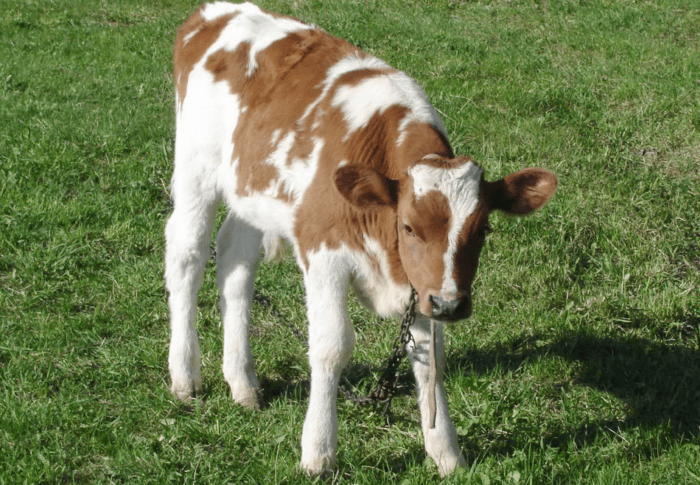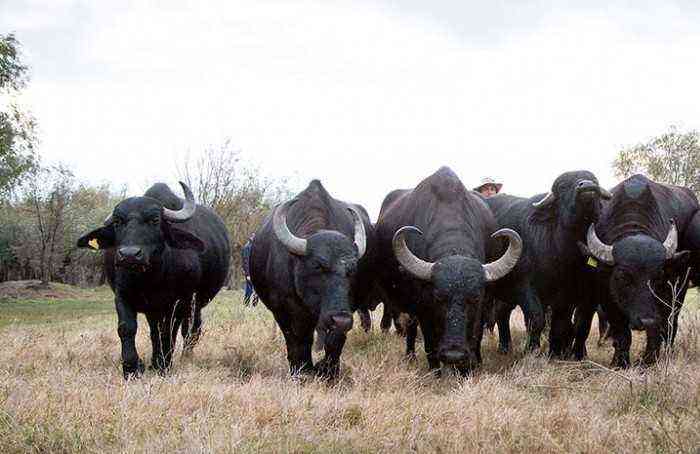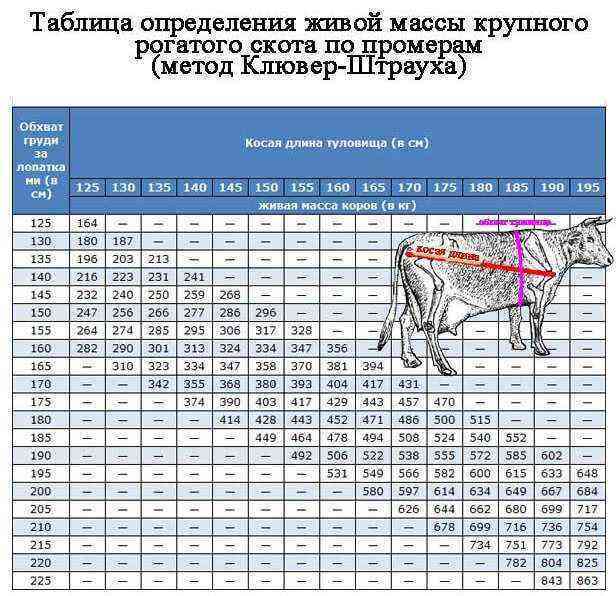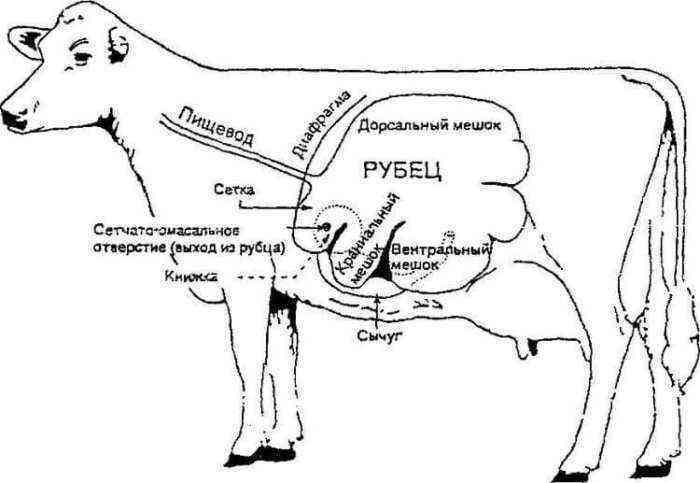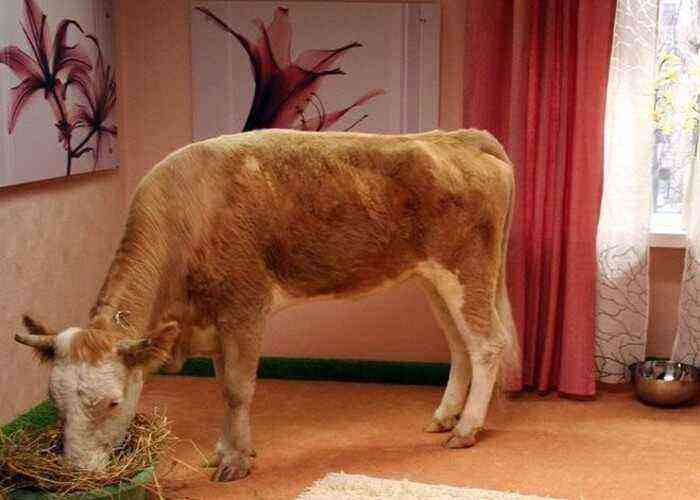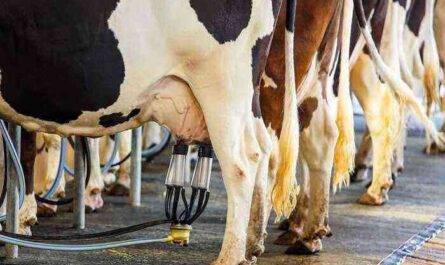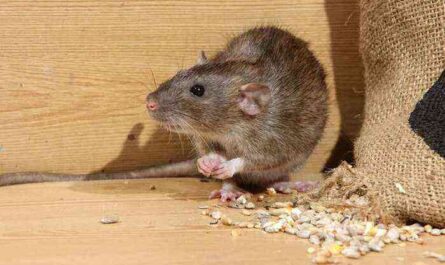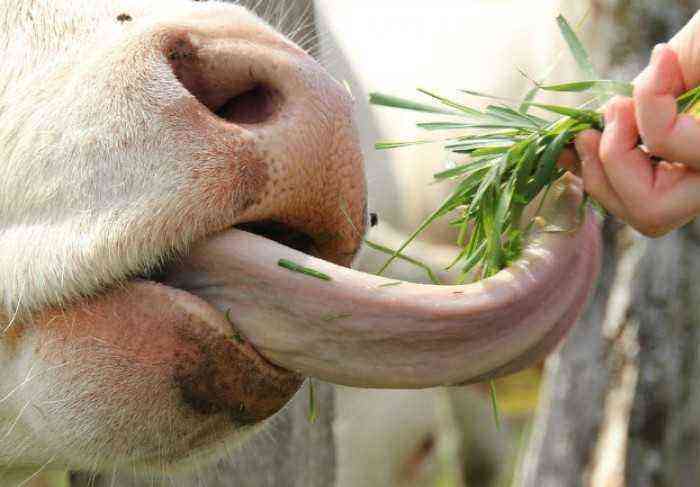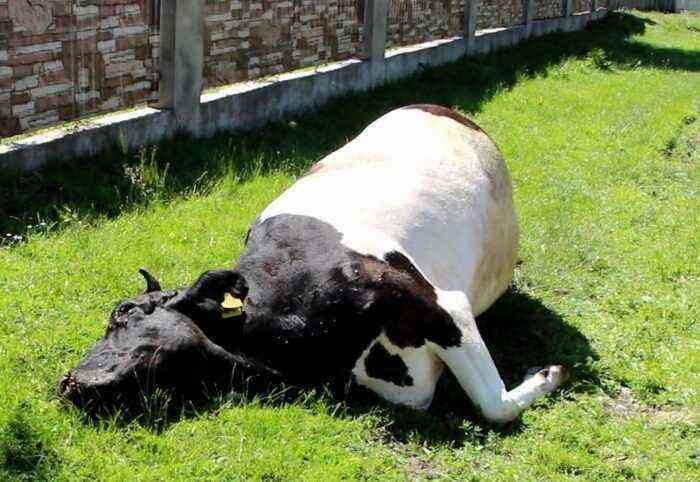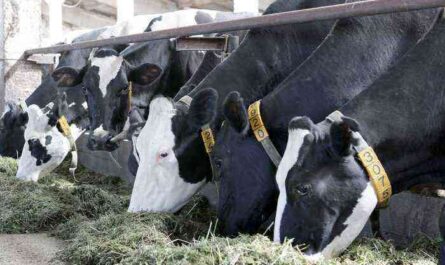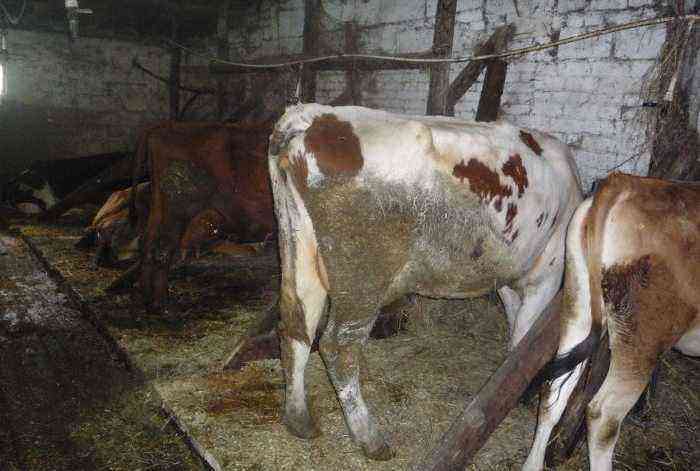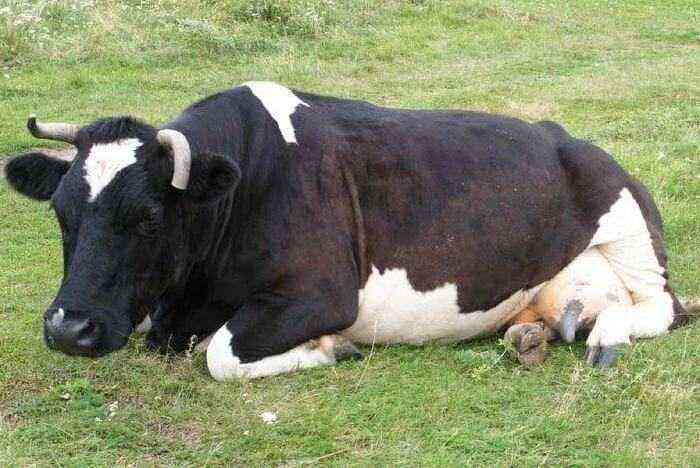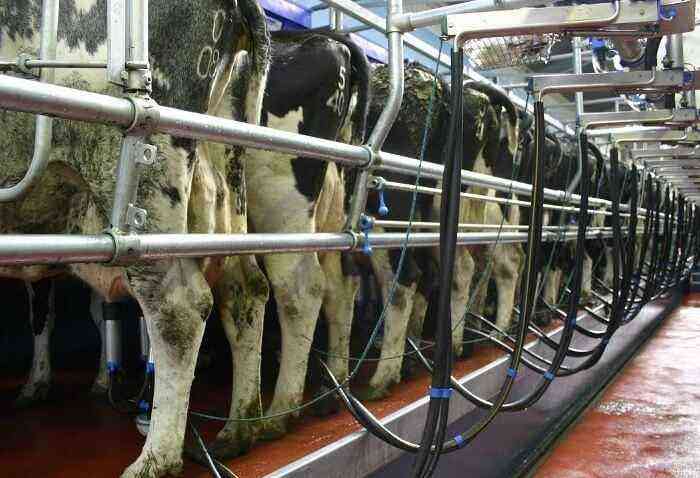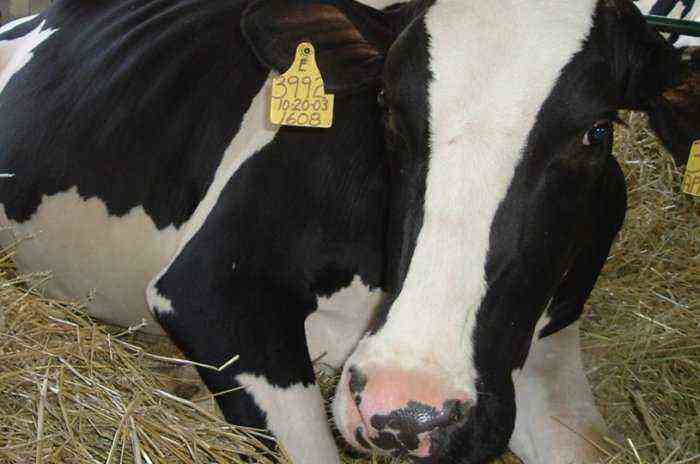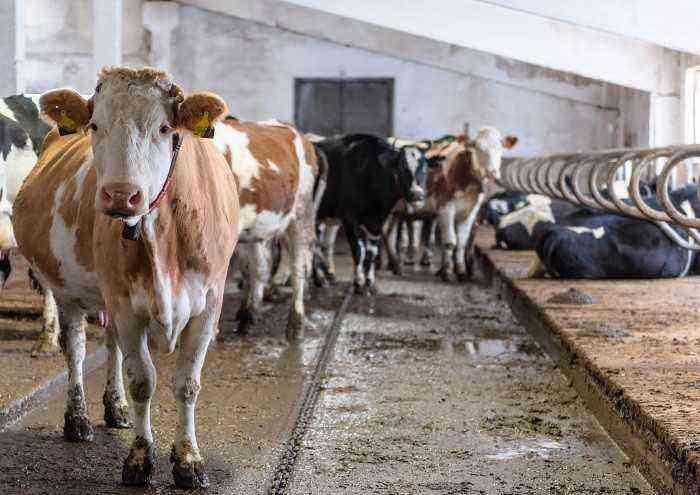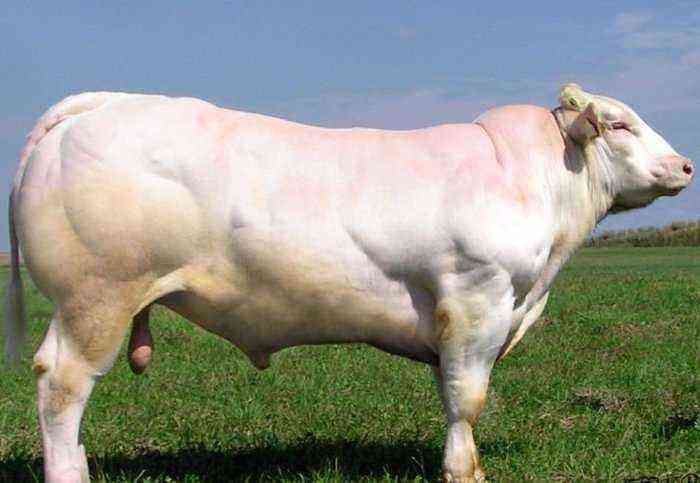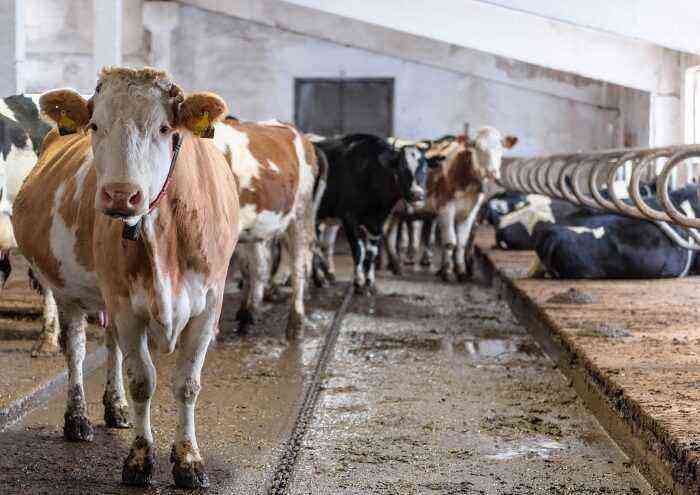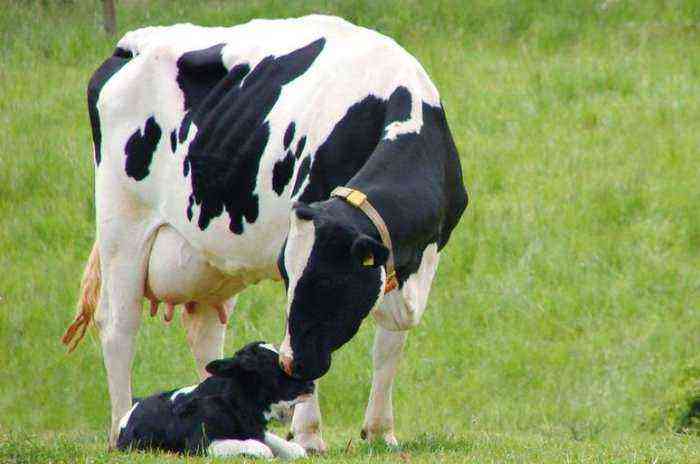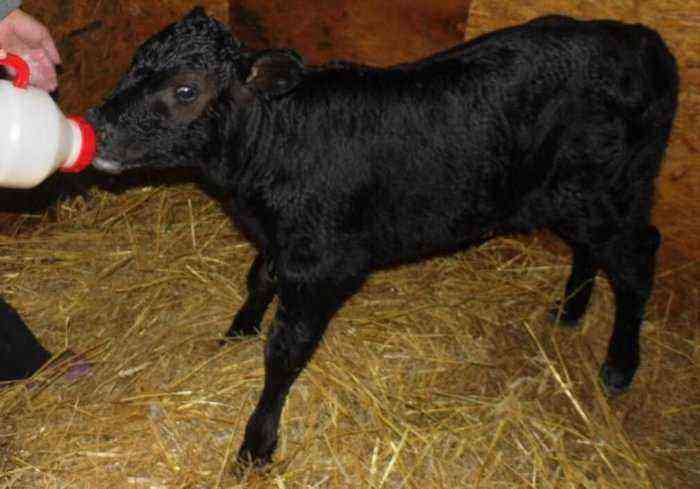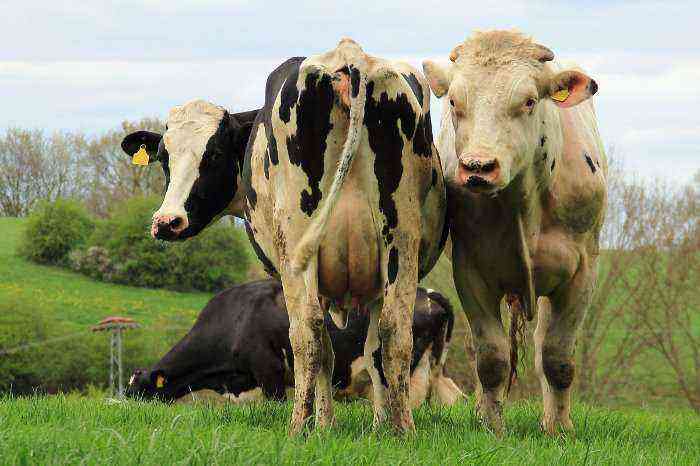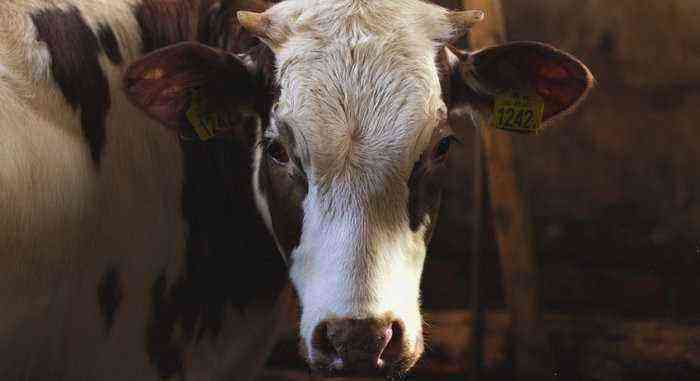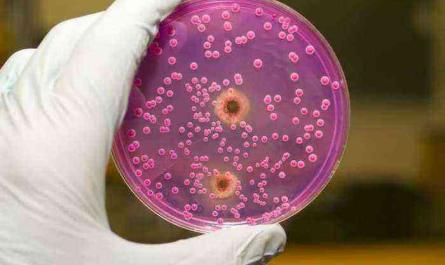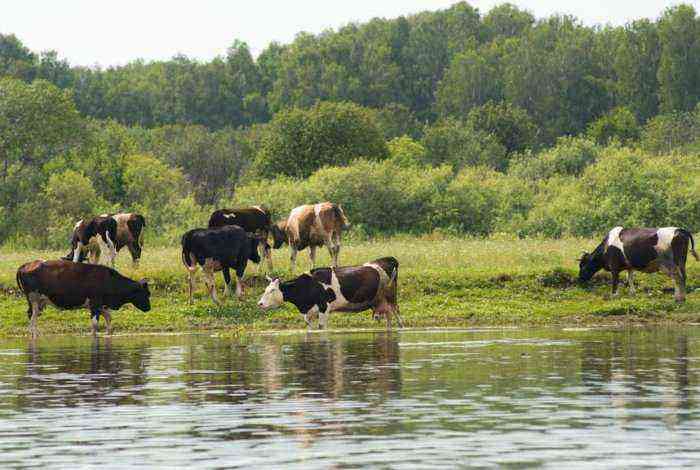Knowing how many liters of milk a cow produces per day is especially helpful for beginner farmers who are just about to purchase an animal. This will allow you to determine whether the purchase will be profitable and help you rationally plan the consumption of dairy products. In addition, operating with such indicators will allow you to correctly assess the productivity of cows that are already on the farm, and take timely measures to increase milk yield.
Cow’s milk
Average cow milk yield
The milk productivity of cattle is a rather variable value. First of all, it depends on the age of the animal. As a rule, starting from the first lactation period, milk yields constantly increase with each subsequent one, reaching a peak at 4-7 (depending on a number of individual characteristics) lactations. Since that time, the body is no longer so good at replenishing nutrient reserves and the productivity of cows gradually begins to decline.
Also important is the breed of the animal. Some of them were deliberately bred by breeders, by crossing the most productive existing species. As a result, such cows are able to give just a record amount of milk. But if taken as a whole, the average figure is about 5 thousand liters. At the same time, a general idea of the productivity of a cow is compiled on the basis of daily and annual milk norms.
Per day
How much milk a cow gives in one day is largely influenced by the conditions of detention that she was provided with, the time of year, diet, lactation period. As a result of some scientific studies, it was possible to find out that even the way the owner communicates with the cow affects the daily milk yield. In addition, far from the last place is played by the breed. Special dairy breeds, such as the Dutch, are capable of producing about 20 liters of milk per day. At the same time, the productivity of meat and dairy cows can vary from 12 to 17 liters per day.
Reference. The average milk yield for cattle in Russia is 17 liters of milk per day.
In year
Annual milk yields allow you to register the overall productivity of livestock and, on its basis, adjust the conditions of keeping and diet of cows for the next year. In domestic open spaces, the average for non-dairy breeds is about 4000-5000 thousand liters. The annual productivity of dairy breeds is approximately equal to 6000-8000 thousand liters. At the same time, the Holstein variety, under proper conditions, easily overcomes the bar of 10 thousand, and in some farms milk yields reaching up to 12 thousand are recorded.
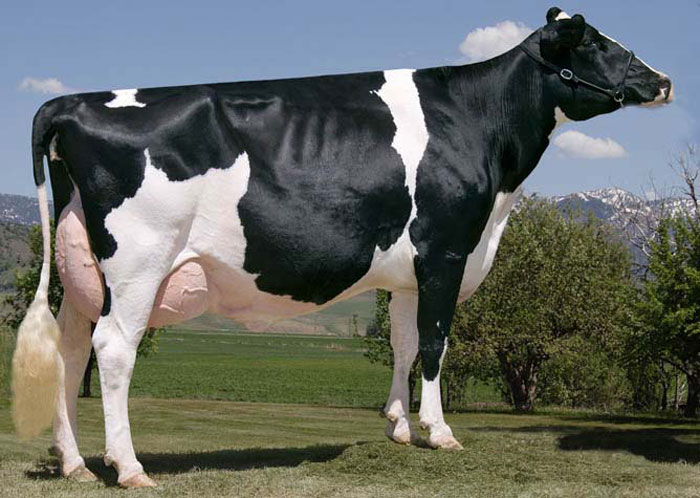
Holstein cow breed
How to choose a cash cow?
When choosing a cow that will give a decent milk yield in the future, first of all, you need to pay attention to the breed. In Russia, today highly productive dairy cows are represented by 10 main breeds. Of these, the most common are:
- Holstein. Under proper conditions of detention, the average daily volume of milk in one individual is 23 liters. The breed is rightfully one of the top three in terms of productivity.
- dutch. Animals of this species have been valued for their high productivity for several centuries. Moreover, it is this breed that is most often taken as a basis in breeding work. The daily milk yield of Dutch cows averages 20 liters.
- Red steppe. Representatives of this breed can hardly be classified as highly productive, since they bring no more than 15-17 liters of milk per day. But, its advantage is that the animal is extremely unpretentious to nutrition, and even on underdeveloped vegetation it is able to reach the indicated norms.
- black-and-white. The daily milking rate is 17 liters. At the same time, the cow has a high level of adaptation to various living conditions. Shows high productivity, both in cold and warm climates.
Also quite popular are the Yaroslavl, Ayrshire, Tagil varieties.
But, in addition to a properly selected breed, it is necessary to pay attention to the parameters of a particular animal. First of all, the appearance of the animal is taken into account. In a dairy cow, the following nuances can be traced in the constitution:
- the head, in comparison with the body, should be small;
- the neck is dotted with a large number of folds;
- the belly is distinguished by a barrel-shaped convex shape. In this case, you should carefully watch so that it does not sag;
- the chest is wide, with large distances between the ribs;
- the back should not be arched, while the sacrum is wide and strong;
- the legs should not be very muscular, but strong, otherwise the animal will be inactive, which means it will be much more difficult to reach maximum milk yield;
- the udder is large with protruding nipples and pronounced blood vessels, during milking it decreases significantly in size and is taken in folds in the back.
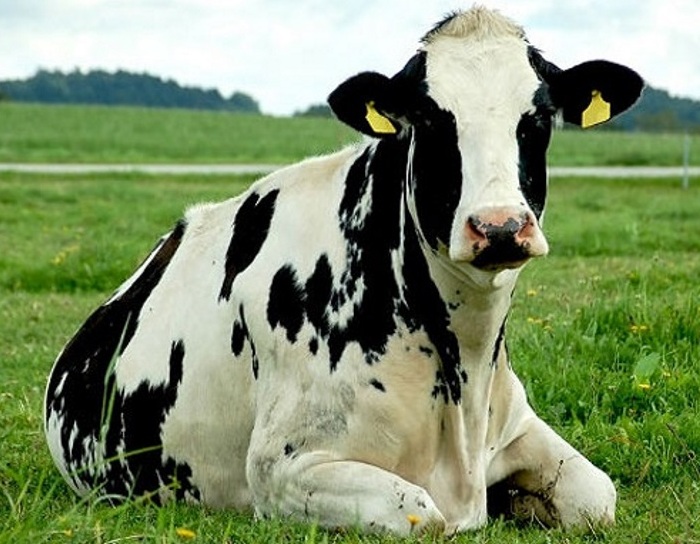
What should a cow look like?
By the exterior and behavior of the animal, one can also judge its health. You should not buy coughing individuals, cows in which cracks, ulcers or wounds of an incomprehensible nature are traced on the skin or udder. Inflamed skin or hardened areas on the udder are also a warning. The coat should be shiny and soft to the touch. Activity and a calm disposition should prevail in the behavior of the animal.
It should be noted that in addition to the general appearance, the age of the animal must also be taken into account. If the seller of livestock enjoys the trust of the breeder, you can be guided by his words when buying. If a cow is purchased from strangers, the age can be calculated independently. To do this, just look at the horns. It is best to take into account the number of rings on the horns. Each such ring appears during pregnancy.
By counting the rings and adding two years to the resulting number, you can find out the approximate age of the animal. It simply does not make sense to buy a cow after 5-6 calving, as its productivity is already declining. In addition to the quantity, pay attention also to the location of the rings. This will help determine the regularity of pregnancy in livestock. If there is too much distance between some rings, the cow was dry in some periods.
And, finally, it is necessary to take into account how it is planned to milk the acquired livestock. If milking is done by hand, you should definitely try to milk the animal before buying. This is a completely rational selection criterion. If milk has to be squeezed out of the udder, it is better not to buy such an individual. Even with all its productivity, the milking process will be extremely difficult and will take a lot of effort.
How to increase milk yield in a cow?
How much milk a cow produces depends on many different factors. But, first of all, in order to ensure large milk yields, it is necessary to take care of the correct and balanced nutrition of the animal.
Milk in the mammary gland is produced on the basis of nutrients that enter it from digested food. And if there are not enough easily digestible carbohydrates, fats and vitamins in it, the body will begin to borrow all the necessary components for the production of milk mass from reserve reserves. As a result, in addition to a sharp decrease in productivity, the weight of the cow itself will also begin to fall. This phenomenon is especially intense three months before calving and in the next three after the appearance of the offspring.
This problem can be solved in the summer by grazing. In the grass, the animal will find protein and other components necessary for development and milk formation. In winter, you need to provide the animal with a sufficient amount of concentrated and juicy food. In addition, one should not forget about various mineral and vitamin supplements.
Attention! Necessarily proper feeding should be supplemented by free access to water. The cow should drink when she needs it and in the right quantities.
Also, to a certain extent, a gradual increase in the length of daylight hours due to lighting devices can contribute to a higher milk production. By increasing it to 16 hours, the productivity of a cow can increase by 1/10.

Regular long walks
In addition, regular long walks should be included in the daily schedule of the animal, even when kept in a stall. They will contribute to faster absorption of nutrients and increase appetite.
Another important point influencing the volume of milk yield is regular and timely milking. It must be done at the same time. In addition, such a process requires compliance with a number of important points, which just contribute to better milk extraction. These moments include:
- Pre-massage. Before each milking, the cow’s udder must be thoroughly massaged for at least a minute. This will contribute to the general relaxation of the animal, as well as the release of oxytocin into the body, which drives all the milk formed into the lower part of the udder.
- Fast transition to milking. You need to milk the cow immediately after the massage. This is important because oxytocin stops its action after 5-6 minutes, and the release of milk mass becomes less intense.
- Elimination of any discomfort. No matter how it sounds, nothing should distract or frighten the animal during milking. A sharp noise, shouting, inaccurate movement that causes pain in a cow can lead to a sharp decrease in milk production. As a result, daily milk yield may fall.
A prerequisite for good milk yields in the winter is the optimal temperature regime in the barn. In the absence of high-quality insulation and heating, more than 20% of the energy received from food is spent on heating the cow’s body. Accordingly, energy consumption for milk production is reduced, so it is extremely important to provide heat in the stalls during the cold season.
Factors affecting the milk production of cows
As already noted, the productivity of a cow is influenced by quite diverse factors. Among them, the main ones are:
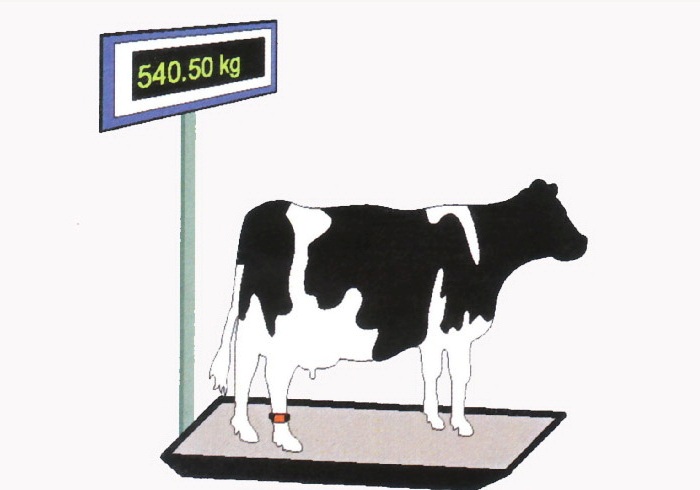
Animal live weight affects productivity
- Breed and genetic predisposition to high milk yields. Even in dairy breeds, low-producing animals are sometimes found and it is likely that their offspring will also fall into this category.
- Live weight of the animal. The more a cow weighs, the more milk it can produce. The reason for this is the greater intake of nutrients.
- Age. An increase in milk productivity in cattle can be traced, in extreme cases, up to 7 lactations. Then, inevitably, there is a decline. Therefore, milk yield in young individuals is much higher.
- Balanced diet. The correct proportions of concentrated and succulent fodder, mixed fodder, grass, hay, vitamin complexes and premixes will provide significantly higher milk yields than when feeding than necessary.
- Conditions of detention. A warm, clean, ventilated, and adequately lightened barn can also have a significant impact on a cow’s productivity.
- Proper milking. A cow must be milked at least 3 times a day. In this case, it is necessary to strictly observe the technique of milking. Stop milking shortly before calving, when the cow gives no more than 0,5 liters of milk per day.
- Good health. The process of milk formation can be affected by many disorders in the health of the animal. Therefore, the cow should be periodically examined by a veterinarian in order to prevent the development of diseases in time.
Thus, compliance with the optimal conditions for keeping a cow and proper nutrition can significantly increase the milk production of an animal. At the same time, the points listed above will help to reasonably assess the current level of milk yield in livestock and increase it if necessary.
